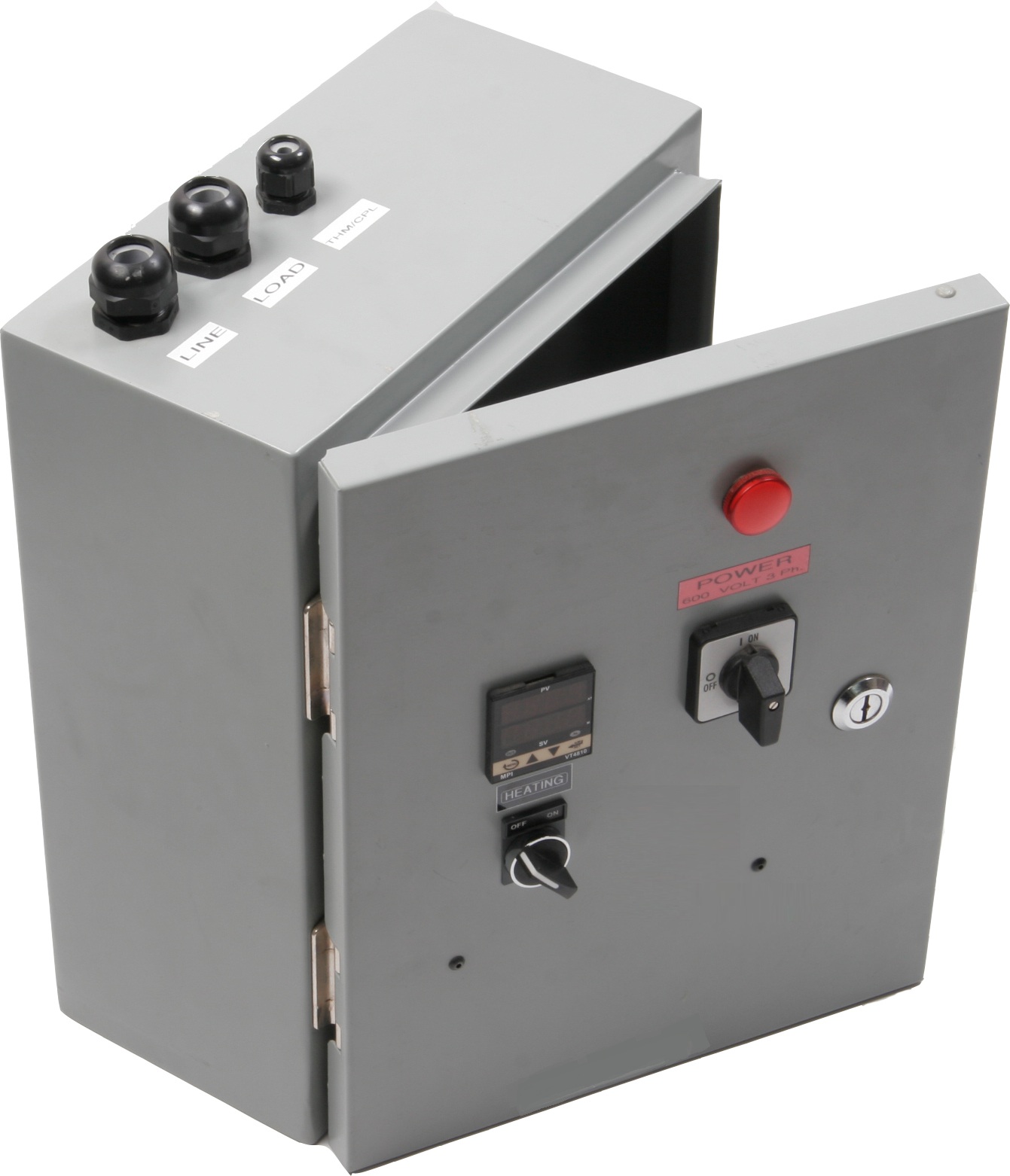Temperature and Power Controls for Industrial Electric Heating
Last updated on April 16th, 2025 at 06:39 am
A control system is an essential part of every industrial heating system. Whereas some applications may require a control system more than others, it is important to ensure that all process heating systems have a proper control panel. A process control enhances the performance of a thermal system and helps to extend the life of an electric heater. There are different types of controls for industrial thermal systems. These controls vary in accuracy and performance.
Temperature control
The PID controls and the bulb-and-capillary thermostats are the most common types of temperature controls used in industrial electric heating systems.
PID temperature controls
A PID is a three-mode controller that integrates proportional, integral, and derivative actions to provide stable and accurate temperature control. Its integral and derivative actions make it a suitable choice for complex thermal systems. This temperature controller can accept an input from a variety of sensors including resistance temperature detectors (RTDs) and thermocouples. It outputs a voltage that can be used to control a variety of devices. These include electromechanical contractors and mercury displacement relays (MDRs). Refer to some of these temperature control panels.
Bulb-and-capillary thermostats
A bulb-and capillary thermostat is an easy to operate temperature control system that is suitable for applications that don’t require high-accuracy control. As temperature rises, it causes the fluid to expand. The expanding fluid turns the switch off as the temperature approaches the desired temperature set by the operator. As the fluid in the capillary cools, the switch turns on and provides a control voltage to a mercury displacement relay (MDR) or an electromechanical relay. 
Power controls
The following are the most common power switching devices used in process heating systems:
- Electromechanical relays
- Mercury displacement relays
- Solid-state relays
- SCR power controls
Electromechanical relays
Electromechanical relays have low accuracy, limited life, and generate a significant amount of electrical noise. For best performance, the minimum cycle time should be 30 seconds. The temperature control provides a control voltage that causes the contacts to come together. This completes the circuit and supplies the heater with voltage. An electromechanical relay subjects a heater to thermal shock resulting in shortened life.
Mercury displacement relays (MDRs)
An MDR operates like an electromechanical relay except that it uses mercury as the contact element. This control panel offers a cycle time of 5 seconds and it is therefore faster than an electromechanical relay. An MDR generates heat and electrical noise but offers a longer relay and heater life as compared to an electromechanical relay. Environmental regulations discourage use of MDRs in industrial processes.
Solid-state relays (SSRs)
Solid-state relays have good accuracy but they generate considerable amounts of heat. For best performance, these control devices should be used in vented electrical enclosures. With a cycle time of 1 second, solid-state relays find many applications in process heating systems that demand high accuracy. In addition, a solid-state relay generates minimum noise and it helps to lengthen the life of an electric heater.
 Silicon controlled rectifier (SCR) power controllers
Silicon controlled rectifier (SCR) power controllers
An SCR power control panel offers many advantages including extended heater life, reduced maintenance costs, and precise control of the thermal process. An SCR power control can cycle as fast as 8ms. When used properly, this control device can cycle on and off for up to 1,000,000,000 times.
This means that an SCR power controller can provide reliable service for many years. This control panel generates heat and higher current units should have a cooling mechanism. Just like solid-state relays, SCR power controls produce little electrical noise.
Wattco offers top of the line digital, temperature control panels designed to fit your needs. For more information. refer to some of our case studies on digital control panels, or contact our experts today to discover more ways our electric heating products can benefit your business.
